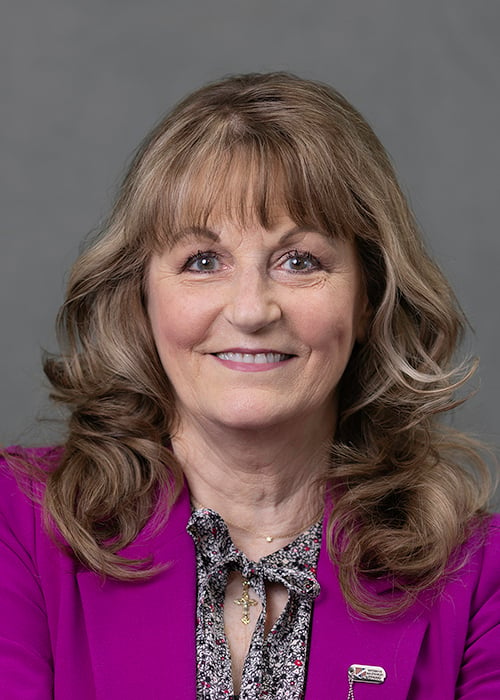Turns out, I am not the only veteran scratching my head wondering why it takes so long to get a medical appointment through the VA’s Community Care Program (VCCP). Even now, with community health care providers open for business in my region after limiting services during the early stages of the COVID-19 pandemic, it still took almost two months to schedule an annual preventive care appointment through my local VA medical center (VAMC).
The VA received an “incomplete” from representatives of Disabled American Veterans, Paralyzed Veterans of America, and Veterans of Foreign Wars – the veterans service organizations (VSOs) that co-author The Independent Budget report – when they were asked during a Sept. 30 hearing on Capitol Hill to grade the time it takes veterans to secure a community care appointment.
The question came from Rep. Mark Takano (D-Calif.), chair of the House Committee on Veterans’ Affairs. That committee convened the hearing following a recent government audit where the Government Accountability Office (GAO) outlined improvements needed to help ensure timely access to care in the community.
The report revealed some concerning information to committee members, indicating VA still has not set any timeliness goals for community care dating back to 2013. VA allows staff up to 19 days to create the referral within the department’s coordination process before forwarding to VA contractors (TriWest or OptumServe) to schedule the appointment, but there are no goals or timelines in place for when the appointment actually takes place.
[RELATED: Long-Awaited VA Caregiver Program Launches]
Rep. Julia Brownley (D-Calif.), chair of the committee’s health care subcommittee, kicked off the meeting by noting “VA community care is not a new benefit and has been around since 1945.” The MISSION Act, she noted, was a way to solidify the disparate community care programs previously administered by VA and combine them into a single community care program to streamline the process and make it easier for veterans to get care.
Veterans waited an average of 41.9 days from the time they made their appointment request to when they were seen by a community provider, said Brownley, referencing figures provided by the VA to the committee. The data, she said, show the “program is not great.”
Brownley questioned why the VA has timeliness goals inside its own medical facilities yet has no such standards for community care providers. The VSOs listed above and other lawmakers echoed her concerns; in surveying their membership, the VSOs highlighted the following issues:
- Ongoing issues with community providers inappropriately billing veterans for their care, a concern cited by one third of those surveyed.
- Providers leaving the network and no longer providing veterans with care.
- VAMCs only just now contacting veterans to coordinate cancelled or postponed appointments.
- The magnitude of the “bubble of deferred care,” and how quickly the VA can address veterans’ health care needs.
[RELATED: Veterans Will See Same Cost-of-Living Boost as Social Security Beneficiaries]
The GAO official who wrote the report told lawmakers the issues outlined in the audit are longstanding and pre-date the MISSION Act. When the VA implemented the new community care program in June 2019 as mandated by the MISSION Act, the department was required to take on scheduling veterans’ community care appointments, something previously done by contractors in 2014 under the CHOICE Program, the precursor to the current program.
“GAO previously recommended in 2013 the need for an overall wait-time measure for veterans to receive care under the prior CHOICE Program,” said the official. “Subsequent to VA not implementing this recommendation, GAO again recommended in 2018 the department establish an achievable wait-time goal.”
Congressional action is now warranted, the report states, “given VA’s lack of action over the prior seven years in implementing wait-time goals for the various community care programs.”
VA officials’ responses to congressional questioning about wait times and the scheduling process were mixed and lacked the clarity members needed to understand what was causing the delays in care.
[RELATED: VA Announces Completion of Vietnam-Era Deck Log Digitization]
One official was unable to answer how veterans are getting the quality information they need to choose community care providers. Further, when GAO told Brownley that the VA had not created a timeliness standard because it was not statutorily required, Dr. Steven Lieberman, the acting principal deputy undersecretary for health at the Veterans Health Administration (VHA), said he was unfamiliar with the requirement and did not know who told GAO that the VA would need to be required by law to establish such a goal.
However, VA officials did concur with Brownley that the department needed to address major structural problems, including:
- People. Hire more staff to do the work.
- Process. Streamline and make it easier to schedule appointments.
- IT. Use technology to support and streamline the process.
- Communication. Enhance training for employees to understand the process, identify veterans’ preferences, and find better ways to inform veterans of their options for care.
Officials told lawmakers that while the pandemic has challenged the department’s health care system, the VA is open for business and is encouraging veterans to get their care — committing to meeting veterans wherever they feel comfortable. About 90% of the postponed appointments have been reviewed, VA officials said, and the department is doing its best to ensure no veteran falls through the cracks.
On the other hand, officials also pointed out timeliness metrics are hard to come by when it comes to community care, and there are long wait times for community providers depending on the care needed.
“Requiring community providers to see veterans in a certain period of time could result in those highly sought-after providers leaving the VCCP network,” Lieberman said. Rather than wait times, the VA has been focusing on veterans’ satisfaction as a gauge and is fielding a new survey to gather the information.
The hearing marked the fifth oversight hearing on the MISSION Act conducted by the House this year. According to lawmakers, they will be looking very carefully at the issue of timeliness and how the VA is delivering health care to veterans going forward. VSOs like MOAA will be doing the same, though without timeliness goals it will be hard for Congress to determine whether the VA is accomplishing its goals and veterans are getting the care as intended by the MISSION Act.
MOAA Knows Why You Serve
We understand the needs and concerns of military families – and we’re here to help you meet life’s challenges along the way. Join MOAA now and get the support you need.

